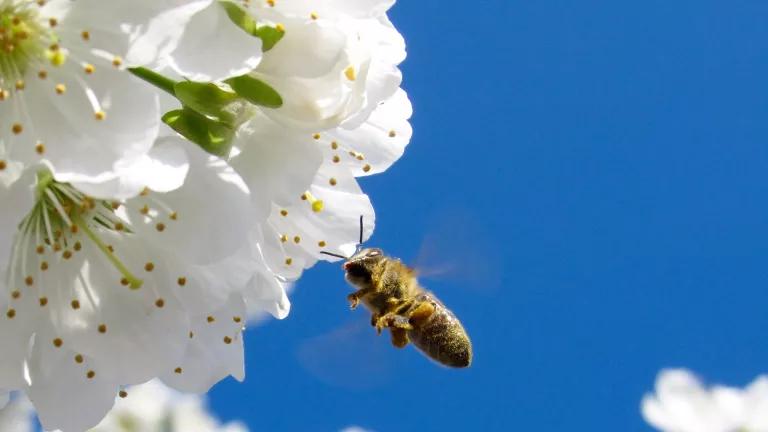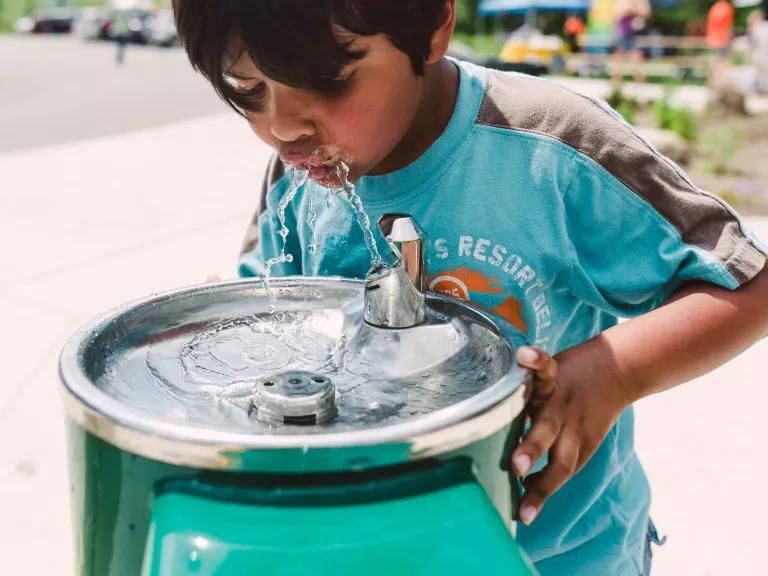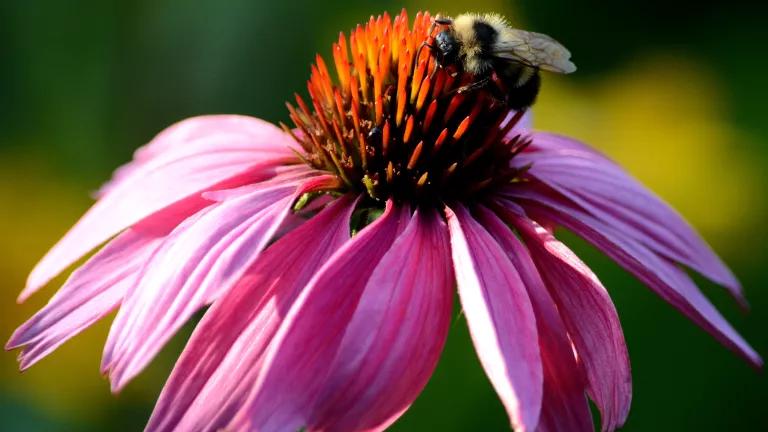
In a holiday gift to the state’s bees, birds, and people just before the end of the year, New York Governor Kathy Hochul signed into law the Birds and Bees Protection Act (A.8571-Glick/S.8031-Hoylman-Sigal)—a first-in-the-nation law to rein in dangerous and wasteful uses of neonicotinoids or “neonics.”
For those who’ve read past blogs on the bill, you know that neonics are the most-used insecticides in the country, and increasingly considered some of the most ecologically destructive pesticides since DDT. Long linked to mass losses of bees and other pollinators that have driven down crop production, neonics have made U.S. agriculture 48-times more harmful to insects, prompting EPA to make the unprecedented finding that neonics likely jeopardize the continued existence of 200+ threatened and endangered species—roughly ~11% of the entire endangered species list.
Beyond bees, the neurotoxic pesticides are also linked to:
- Mass losses of birds;
- The collapse of fisheries;
- Extensive water contamination in New York (especially on Long Island);
- Birth defects in deer; and
- Threats to New Yorker’s health, especially that of children.
Indeed, recent research finding rising levels of neonics in the bodies of over 95% of pregnant women tested in New York and four other states had New York health experts ringing alarm bells. Neonics pass easily from mother to fetus, and studies link neonic exposures in the womb with birth defects of the heart and brain, reduced cognitive abilities, and autism-like symptoms.

Neonics commonly pollute New York water sources and are linked with serious threats to children's developmental health.
Fortunately, New York’s new law will dramatically curb neonic use when fully implemented, eliminating up to 80-90% of the neonics entering the state’s environment annually by prohibiting only neonic uses that are wholly unneeded or easily replaced with safer alternatives.
The law’s final text is the product of 11th Hour negotiations between the Governor and the legislature—including the bill’s sponsors and longtime environmental champions Assemblymember Deborah Glick and state Senator Brad Hoylman-Sigal. Although it differs somewhat from the bill that passed the legislature in June, it represents a modern milestone in protective pesticide regulation.
Under the new law, New York will become the first state in the nation to restrict the use of neonic coatings on corn, soybean, and wheat seeds. Extensive state-commissioned report, ongoing statewide field research, and real world experience show these coatings provide no economic benefits to farmers, yet they remain the largest, most widespread, and most destructive use of neonics both in New York and nationwide, covering hundreds of millions of acres.
Designed to permeate crop plants—making every part toxic (leaves, pollen, nectar, fruit, etc.)—only 2-5% of these neonic seed coatings are absorbed through the roots of the growing plant. That leaves the other 95% to persist in soil for years, where they are easily carried long distances by rain or irrigation water. Unnecessary overuse year after year has made neonics pesticides virtually ubiquitous in soil, water, wildlife, and people across large parts of the state.
Making matters worse, these seed coatings are largely unregulated due to federal and state legal loopholes. For example, New York’s Department of Environmental Conservation (DEC), the state pesticide regulator, previously exercised no regulatory authority over the use of pesticide-coated seeds.
The Birds and Bees Protection Act closes the loophole for neonic-coated seeds and will prohibit such coatings, except where farmers obtain a waiver after demonstrating a legitimate pest risk pursuant to future DEC regulations. A similar system in Québec successfully reduced neonic seed coating use there to almost nothing, without evidence of associated crop loss or farmers switching to more harmful alternatives.
Off the farm, the bill will also prohibit neonic lawn and garden uses starting Jan. 1, 2027—joining New Jersey, Nevada, and Maine. Approved at much higher rates per acre (often 10-fold or more), these uses are some of the worst offenders at polluting water sources in densely populated areas and creating toxic hot-spots for bees and other wildlife.
While the bill stops short of the European Union’s near-total outdoor neonic ban, it provides a science-based, commonsense, and much-needed model for tacking the heart of reckless and unnecessary neonic pollution.
New York’s leaders—including Governor Hochul and the bill’s legislative champions Assemblymember Glick, Senator Brad Hoylman-Sigal Majority Leader Stewart-Cousins, Speaker Heastie, Assemblymember Solages, and Senator Harckham among others—deserve credit for getting the law passed despite a fierce chemical industry lobbying and misinformation campaign. Kudos also go to the broad coalition of 370+ organizations, businesses, and municipalities, farmers from across the state, brewers and other craft beverage producers, religious leaders, chefs, and leading health experts who rallied in support of the bill.
While passage of the Birds and Bees Protection Act marks a bright start to 2024, bees and other pollinators still face dire straits. That’s why NRDC will continue fighting to ensure that this victory marks only the start of eliminating needless and destructive neonic pollution driving the modern “Second Silent Spring”-style biodiversity crisis and imperiling these keystone species.




